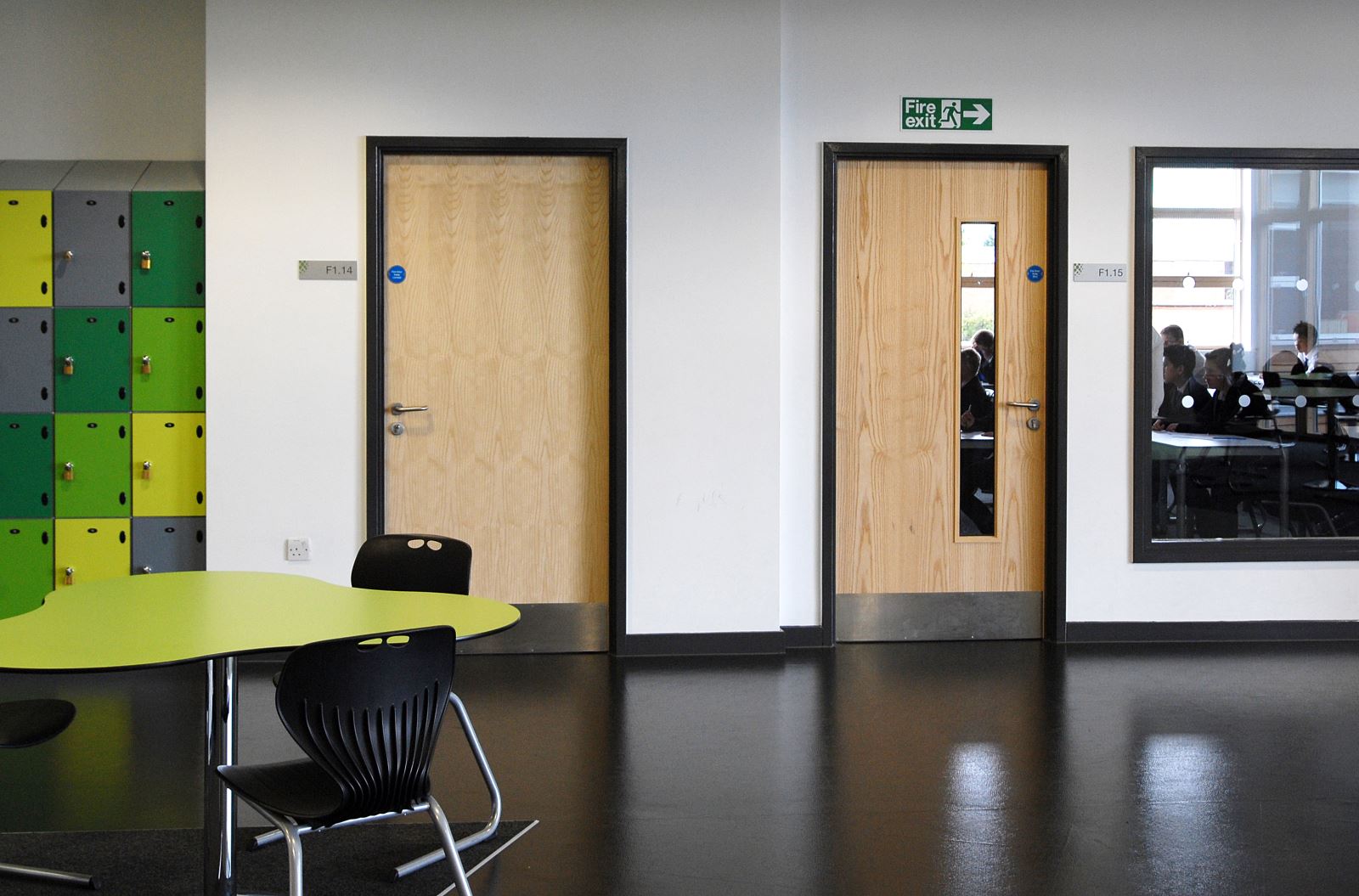Fire Rated Safety Glass in Schools
We probably all remember the wired fire safety glass in our school classrooms and corridors. But now, thanks to the development of new solutions, fire protection can be achieved while also creating more open, bright and aesthetically pleasing learning spaces. In this article we explore the role of fire safety glass within our country’s schools.

Glass is an integral part of the design of our schools, colleges and universities. From the doors and windows in our classrooms and corridors to glazed partitions and screens, specified as an alternative to a solid brick wall, or even the bridge that spans the library atrium, glass is an ideal architectural material. However, in the event of a fire, ordinary glass is simply unable to withstand the flames and high heat generated, in turn posing a serious danger to staff, students and property.
Guidance on the required levels of fire resistance in building compartments – designed to help contain a blaze and minimise its spread – is outlined in the national building regulations, such as Approved Document B in England. The classifications detailed in the documentation state the level of protection a passive fire protection system must be able to provide to prevent the spread of flames and heat in different areas of a building. Fire safety glass is one such example of a passive fire protection measure.
Intended to help provide a means of escape for staff and students, as well as enabling safe access for the emergency services, fire safety glass should be installed where fire protection is of utmost importance. In education buildings, this could be common areas (such as classrooms or libraries), staircases and along designated escape routes.
Fortunately, thanks to developments within the industry, there are now a range of fire safety glass solutions available that are designed with both safety and aesthetics in mind. This is perhaps especially key considering the impact the learning environment can have on students’ productivity and concentration levels, with architectural and interior design choices each having an impact. Through the use of fire safety glass, it is possible to create a bright, airy and open space that is welcoming and inspiring, both for staff and students, while simultaneously ensuring suitable protection in the unfortunate event of a fire.
There are three different classifications of fire safety glass available, each with its own performance levels and characteristics: E (Integrity), EW (Integrity and Radiation) and EI (Integrity and Insulation).
Category E offers the base level of fire performance. While it prevents flames and smoke from penetrating through to the unexposed side, it does not stop the transmission of heat. Glass manufactured to the EW classification maintains the same level of protection against smoke and flame as category E, but in addition will also deliver a reduction in the amount of heat transmitted. Meanwhile EI-rated fire glass offers the greatest level of protection against flames and heat, as well as insulation, significantly reducing the direct passage of transferred heat. The transmission of heat is an important concern, particularly for designated escape routes and compartment barriers, with temperatures in a building fire capable of hitting extreme levels.
As well as ensuring the correct classification is specified and installed, another consideration for fire safety glass in education buildings is its durability and impact resistance. Particularly within high traffic areas, such as school corridors and hallways, ensuring fire safety glass is installed that has also been certified as impact resistant is key.
At Pyroguard, we always recommend that specifiers, contractors and installers, as well as schools, colleges and universities, talk to a fire glass specialist first, when discussing a building’s fire protection strategy. Ultimately, however, whether installing fire safety glass in a new education building or replacing existing glazing with fire safety glass, taking a system approach is essential. This means considering the glass, frame and fixings as one and ensuring it has been tested as one. Only then can you call the glazing ‘fire safe’.
According to a recent report by Zurich, the average school posed a fire risk 1.7 times greater than non-residential buildings and was three times as likely to fall into the ‘high’ fire risk category. With this in mind, ensuring high levels of fire protection are incorporated within the building design, while still creating a welcoming and inspiring learning environment for students, is a clear priority, with fire safety glass an integral part of achieving this.
You can read the report here https://www.pbctoday.co.uk/news/health-safety-news/fire-risk-in-schools/81974/ or for further information please contact us.
